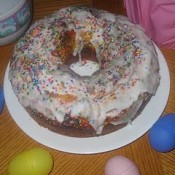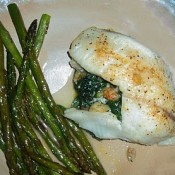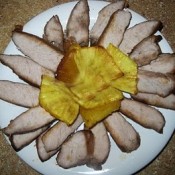Easter Bread

Tis the season for Easter pies, cakes, breads and desserts!
Last year, I posted an article on Easter traditions in an Italian household (click here for the article). It was a great opportunity for me to trace the history of the many desserts and treats that are served during this special season. It was also an opportunity for me to share my recipes for the traditional Italian ham and rice pies that are served this time of year. My main goal in writing this blog is putting my own spin on traditional recipes and sharing them with you. I spent the past 5 years or so tweaking and adjusting my versions of the ham and rice pie recipes until I felt that they were right. I was very honored to receive some positive and very kind feedback on last year’s post.
This year, I set a new goal for the Easter season – I decided to learn how to make Easter Bread. For those of you not familiar with Easter Bread, it’s a sweet bread (often flavored with anise) that’s braided and woven into a basket shape. It usually has colored Easter eggs placed in the middle and is topped with a glaze and candy sprinkles, which gives it a bright and festive look. Serving a slice topped with butter, with a nice hot cup of coffee, tea or espresso makes for the perfect spring time breakfast.
While growing up in my neighborhood, you either made your own bread with a special family recipe, or you stood in line at the neighborhood bakery, waiting for a fresh loaf. We were fortunate to have a wide variety of neighborhood bakeries, including Varallo’s, Potito’s, Termini’s, Isgro’s and Cosmi’s, to name a few. My grandmother would make her own bread, as would many of my aunts. Not wanting to tamper with their perfected recipes, I set out to find a recipe of my own. I checked out a bunch of recipes on the web (there are many out there) and put together a recipe that sounded best to me. One challenge that I had to deal with right off the bat is that we do not own a large stand mixer. Quite a few bread recipes that I found suggest you don’t use a hand mixer, as the dough may become too heavy and burn out the unit. After a bit of searching, I did find a recipe that didn’t require too much work or a dough hook attachment. I started there, adjusted some ingredients to my taste and gave it a shot. Gotta say, I was very happy with the end result! The taste, the texture, the aroma…it was all there!
Before we get to the actual recipe, there’s one more anecdote on traditions that I would like to share with you. Earlier this week, I posted as my Facebook status “Trying out new Easter Bread recipe.” True to family fashion, my cousin quickly stepped up and offered to share my Aunt Tina’s recipe for Easter Bread if I ran into any trouble. A friend of mine also offered to share a recipe that she had (she made sure to let me know that she wasn’t allowed to share her Mom’s recipe…ain’t no arguing that one!). This is exactly what I had in mind when I started this blog. A nice little community to share recipes with family and friends and be influenced by each others ideas. Thank you to my cousin Pauline and and my friend Emma for having my back this time around! And thanks again to everyone for continuing to check out my updated posts. It’s a fun ride and I’m glad to share it with all of you!
Buona Pasqua!
EASTER BREAD
1/2 cup milk
1/4 cup butter
2 cups flour
1/4 cup sugar
1 package dry yeast
3 eggs at room temperature
Optional ingredient for additional flavor*
1/2 tsp. aniseed OR 1/4 tsp. anise extract
Eggwash (1 egg, beaten with 1 teaspoon of water)
6 dyed Easter eggs**
sprinkles
*Anise has a licorice flavor and is often used to flavor cakes and cookies. Aniseeds are traditionally used, but you can use anise extract if you do not want the small seeded texture in your bread. The ratio of seed vs. extract is 2 to 1.
**There is no need to pre-boil the 6 dyed Easter eggs. They will cook with the bread in the oven. Carefully dye them and tuck into the bread when called for.
In a small saucepan warm milk and butter to lukewarm. In a large bowl mix 3/4 cup flour, sugar, and yeast. Add warm milk mixture, stirring well. Add 3 eggs and aniseed/anise extract, blend well, and add remaining flour. Knead with a dough hook or on a floured board until smooth, then place in a greased bowl and cover, let rise for 1 hour.
Punch down dough. Divide in half; roll each piece into a 24 inch rope. Loosely twist ropes together; place on a greased baking sheet and form into a circle. Pinch rope ends together. Cover and let rise for about an hour.
Brush bread with egg wash, gently spread sprinkles over bread Gently split ropes and tuck eggs into openings. Bake at 350 degrees for 30-35 minutes, until golden brown.




Recent Comments